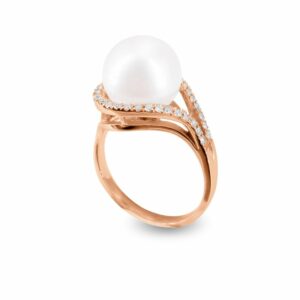Gold jewelry, a symbol of wealth and status throughout history, showcases the craftsmanship and creativity of jewelers and jewelry findings manufacturers. These professionals focus on the various components that make up gold jewelry, playing a crucial role in the aesthetics and functionality of each piece. From ancient civilizations’ intricate designs to modern minimalist pieces, understanding the parts that compose gold jewelry is essential. This article explores these components, their significance, and how they contribute to the beauty and durability of the final product.
The Essence of Gold in Jewelry Making
Gold, known for its lustrous beauty and workability, is highly valued in jewelry making. Its resistance to tarnish and malleability allows craftsmen to shape it into almost any form, making gold an ideal material for intricate designs. The purity of gold is measured in karats, with 24 karats representing pure gold. However, gold is often alloyed with metals like silver, copper, nickel, or zinc to enhance its strength and durability for jewelry, resulting in various karat values such as 18k, 14k, and 10k.
Key Components of Gold Jewelry
-
Gold Chains and Links:
Chains, essential for necklaces and bracelets, consist of interlocking links of gold. These links vary in shape, size, and design, influencing the chain’s strength and aesthetic appeal. Popular styles include the delicate box chain, the sturdy rope chain, and the bold Cuban link, each offering unique visual and tactile qualities.
-
Gold Clasps:
Clasps ensure the security of bracelets and necklaces. They come in various designs, including the reliable lobster claw, the simple spring ring, and the decorative toggle. Each type provides a different balance of security, ease of use, and aesthetic appeal, allowing jewelry designers to choose the perfect clasp for each piece.
-
Gold Settings:
Settings are critical for incorporating gemstones into jewelry, securing the stones while enhancing their appearance. The prong setting, which uses metal projections to hold the stone, allows maximum light exposure, enhancing the stone’s brilliance. The bezel setting encircles the stone with a thin metal rim, offering protection and a modern look. The pave setting, where stones are set closely together for a dazzling effect, creates a surface that appears to be entirely made of gemstones.
-
Jewelry Bails:
Bails, which attach pendants to chains, can be simple loops or elaborate designs that contribute to the pendant’s overall aesthetic. They are engineered to balance the pendant correctly and ensure it hangs beautifully from the chain.
-
Earring Posts and Backs:
Earrings rely on posts and backs for wearability. The post, which pierces the earlobe, is secured with a back. The butterfly back and screw back are common, catering to preferences for security and comfort. Some designs incorporate decorative elements or additional support features for larger earrings.
-
Charms and Pendants:
Charms and pendants add personality and style. These elements can be designed in a vast array of shapes and themes, from simple geometric forms to detailed figures, allowing wearers to express their personal style or commemorate special occasions.
-
Jewelry Enhancers and Slides:
Enhancers and slides allow for versatility in jewelry, enabling the wearer to add or change pendants on necklaces easily. These components are designed for functionality while complementing the jewelry’s overall design.
The Craftsmanship Behind Gold Jewelry
The creation of gold jewelry is an intricate process that blends artistry with technical skill. Jewelry findings manufacturers and artisans employ techniques like soldering, casting, and polishing to shape, join, and finish the gold. The craftsmanship involved is a testament to the jeweler’s skill, with each technique chosen to best suit the piece’s design and complexity.
The Cultural and Symbolic Significance of Gold Jewelry
Gold jewelry carries deep cultural and symbolic meanings, often associated with purity, prosperity, and status. It plays a significant role in traditional ceremonies and is a popular choice for expressing eternal love and commitment through wedding bands and engagement rings.
Conclusion
Gold jewelry represents a fusion of art, science, and tradition, with each component playing a vital role in its beauty and functionality. Understanding the parts and craftsmanship involved in creating gold jewelry deepens our appreciation for these precious items.
For those looking to explore a wide range of high-quality gold jewelry components, visit Konig. The Konig’s collection includes a diverse selection of clasps, earrings, pendants, and other pearl jewelry, with or without diamonds, in various finishes. From basic, low-cost models to luxurious designs perfect for Tahitian and South Sea pearls, Konig’s offerings are designed to complement any pearl size and shape, ensuring there’s something for every taste and occasion.



